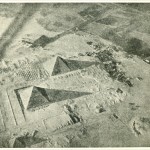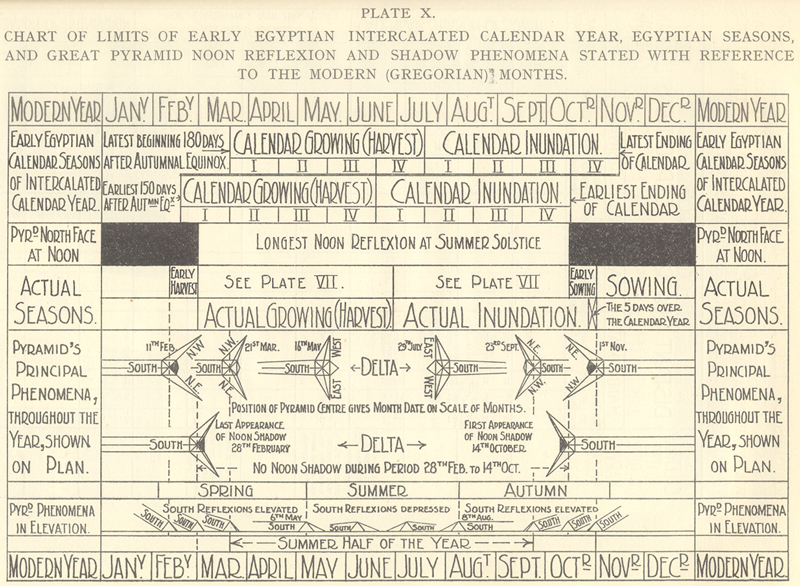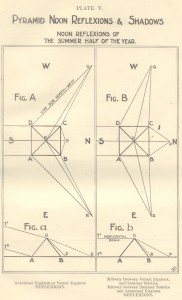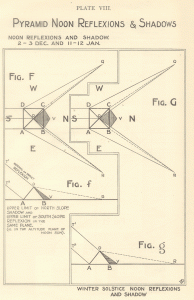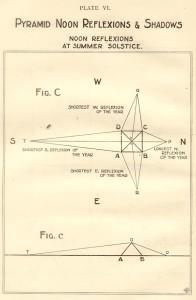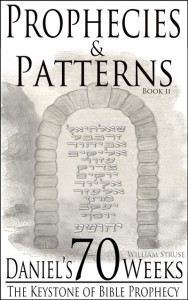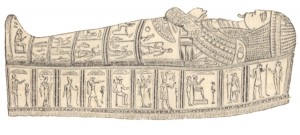 Do you believe the author of Hebrews when he said…
Do you believe the author of Hebrews when he said…
“it is a fearful thing to fall into the hands of an angry God?”
In just a few days, mostly in ignorance, cultures from every corner of the earth will commemorate a day which marks one of the most horrifying examples of Yahweh’s righteous indignation. This day so scarred the consciousness of mankind that its been associated with death and darkness for several thousand years. That day most of us know as Halloween and this week I’ll share with you the tragic Biblical history which tells of this event.
For those of us with a Biblical world view, each year the discussion of whether it’s okay to celebrate Halloween becomes a bit more divisive. Some of you probably believe celebrating Halloween is no big deal, I must warn you up front, that if you have the courage to keep reading I’ll show you why, in fact, your celebration of Halloween is whistling past the graveyard of God’s wrath.
Those of you who are regular readers of this blog know I like to look at these things in terms of the Biblical record and ancient history. So today I will share with you a bit of little known history which just might change your perspective on this increasingly popular holiday. What I’m going to share with you is the Biblical origins of Halloween.
In my blog post today I take you back nearly 4500 years to the most horror filled day in the history of mankind, a day when mankind nearly vanished from the face of the earth.
You and I know it as Halloween, All Saints Day, or the Day of the Dead, but as you are about to learn these celebrations all have a common origin in a real historical event. Today, you and I associate Halloween with ghosts, witches, wandering spirits, and lost souls. Many claim these celebrations are the result of the pagan practices of the Druids and Celts, but the truth is actually much further back in history.
Did you know that Assyria, Babylon, Egypt, Peru, Australia, India, Polynesia, Mexico, and Europe all have their own traditions concerning a destruction of mankind? Traditions do vary, but beginning in the fall, towards the end of our modern calendar month of October, many cultures of the world commemorate this event.
One of the best summaries of the subject, that I’ve ever read, was written at the turn of the century by David Davidson.1 Though, I don’t agree with all of Davidson’s conclusions, the historical references that he provides related to the great destruction of mankind are well worth considering. This is a rather lengthy quote, but worth the effort:
* * *
Ҧ 25. THE FESTIVAL OF THE DEAD.
Attention has been directed (in ¶15) to the fact that the 1st November dating was intentionally observed instead of the beginning of Winter, seven days later. The 1st November Pyramid phenomena defined the first day of the fixed agricultural year of the Ancient Egyptians. It is with respect to this fixed 1st November year that the early Egyptian Calendar year was intercalated at the end of every five or six years. Hence the festival of the true beginning of the New Year was observed in Egypt at intervals of this duration as early as the time of Dynasties I and II.3
At the time of Dynasty XII, the celebration of the New Year festival took the form of lighting lamps for the dead on the last day of the old year and the first day of the New Year.4 As Dr. Frazer has pointed out, this proves that the New Year’s Festival at this time was the ancient Festival of the Dead—the modern All Souls’, or All Saints’ (1st – 2nd November).5
“The custom,” he remarks,6 “was observed throughout the whole of Egypt,” and is referred to by Herodotus (II, 62), as prevailing in the 5th Century B.C.” “On All Saints’ Day, the 1st of November,” Frazer continues, “ the shops and streets in the Abruzzi are filled with candles, which people buy in order to kindle them in the evening on the graves of their relations : For all the dead come to visit their homes on that night, the Eve of All Souls’, and they need lights to show them the way.”
Similarly, he states, “The Miztecs of Mexico believed that the souls of the dead came back in the twelfth month of every year, which corresponded with our November. On this day of All Souls the houses were decked out to welcome the Spirits.8
Frazer suggests that “The nominally Christian feast of All Souls’ on November 2nd, appears to be an old Celtic festival of the Dead, adopted by the Church in 998 A.D.” “The Celts and the Teutons appear to have dated the beginning of their year from the beginning of Winter, the Celts reckoning it from the 1st of November and the Teutons from the 1st of October. “ The feast of All Saints’ on November 1st, seems also to have displaced a heathen festival of the dead.”9
¶ 26. OSIRIS AND THE FESTIVAL OF THE DEAD: ISIS AND THE GREAT PYRAMID
In the dual aspect of Osiris as corn or vegetation-god and god of the dead, the rites of Osiris embodied in one celebration, at the commencement of the November Vegetation Year, the rites of the agricultural deity and the rites of primitive ancestor-worship. In the sowing of the grain in November was seen the symbolic burial of the god ; in its growth, his renewal of life ; his resurrection ; and, in harvest, the death and sacrifice of the god.10 Thus Dr. Frazer states :11
“ Under the names of Osiris, Tammuz, Adonis, and Attis, the peoples of Egypt and Western Asia represented the yearly decay and revival of life, especially of vegetable life, which they personified as a god who annually died and rose again from the dead.”
The rites of Osiris in ancient Egypt were annually celebrated on the day of the Festival of the Dead, November 1st. Owing to the fact that the noon reflections of the Great Pyramid defined the day of the celebrations, Osiris, in later Egyptian times, was associated with the Pyramid. Hence the fact that Isis, the female counterpart of Osiris, was designated in later times, “ the queen of the Pyramid,” and the “ mistress of the commencement of the year.” When the November year was discarded for the Sothic or Sirius Year, Isis followed the alteration of the year’s beginning, and was identified with the star Sothis or Sirius. The original November year beginning aspect of the goddess was Hathor, later absorbed by Isis.
¶ 27. THE GREAT PYRAMID NOT AN INSTITUTION OF EGYPTIAN RELIGION.
The accounts of Herodotus that Cheops (or Khuphu), the builder of the Great Pyramid, closed the Egyptian temples of the gods, and forbade sacrifice to the gods, and of the Egyptian priest, Manetho, that the same king “was arrogant towards the gods,” have been confirmed by Professor Petrie’s excavations at Abydos.12 Furthermore, the simplicity of the Great Pyramid, and of other works belonging to the same reign, the utter lack of internal or external ornament and inscription, removes the Pyramid entirely from the particular kind of religious atmosphere associated generally with every form of Egyptian architecture.
It seems clearly obvious, then, that the First of November phenomena of the Great Pyramid had not been devised to ensure the celebration of the rites of ancestor-worship, or the rites of Osiris, on this particular day. The traditions concerning the festival, however, indicate that it was considered to be the anniversary of an historical event, rather than of an event belonging to the astronomical or vegetational phenomena of the year. This again, is confirmed by the Pyramid indicating this date rather than the true beginning of winter.
¶ 28. THE TRADITIONAL ORIGIN OF THE FESTIVAL OF THE DEAD.
As to the origin of the traditions concerning the festival of the dead, Haliburton13 states as follows :— In Mexico “ the festival of the dead was held on the 17th of November, and was regulated by the Pleiade. They had a tradition that, at that time, the world had been previously destroyed, and they dreaded that a similar catastrophe at the end of a cycle would annihilate the race.”
The 17th of November14 occurs also as an alternative dating of certain cults in Egypt during Dynasties XII and XIX, in Ptolemaic Egypt, and at the time of Plutarch. It occurs in Ancient Rome as an alternative date to 1st November. According to Plutarch, the alternative dating, on the fixed Alexandrian (Julian) Calendar of his time, fell on the 17th day of the Egyptian month Athyr (Hathor).15 In the XIIth Dynasty, the same alternative dating would be the 17th day of Month I, Season of Sowing,—the 1st month of the fixed 1st November year.
Reference to the Egyptian form of the traditional destruction of the world appears in the early Xth Dynasty Papyrus, Petersburg III6A,16 as “The Destruction of Mankind.” The Xth Dynasty Papyrus states: “ God made heaven and earth (refer Gen. I, i) at their desire. He checked the greed of the waters (refer Gen. I, 6-10) and made the air to give life to their nostrils (i.e., by the removal of super-saturation from the atmosphere effected by process of Gen. I, 6 and 7. For previous conditions refer Gen. II, 5 and 6). They are His own images (refer Gen. I, 26, 27) proceeding from His flesh He slew His enemies and destroyed His own children because of their plots in making rebellion.” (Refer Gen. VI, 5-7, 11-13, for causes.)
The later form of the narrative, appearing in the tomb of Seti I of Dynasty XIX,17 associates Hathor with the “Destruction of Mankind,” which would account for the 17th day of the Egyptian month Hathor (the Athyr of Plutarch’s account) being identified, in later times, with the Festival of the Dead.
¶ 29. HATHOR AND “THE DESTRUCTION OF MANKIND.
” Outstanding features of the XIXth Dynasty story of the “Destruction of Mankind “ fix that narrative as the Egyptian rendering of the narrative of the Noachian flood in Genesis, and of the ancient Mexican tradition of the destruction of the world, referred to by Haliburton. Commemoration of the latter, as quoted, “ was regulated by the Pleiades.”
Confirming the connection between the various forms of the narrative, Haliburton observes that the celebration of the festival of the dead by the Australian aborigines was held in November, when the constellation of the Pleiades is most distinct, and was specifically worshipped as “ the giver of rain.”18 He says again that “ The month of November was formerly called in Persia ‘ The Month of the angel of death.’ “19
In the Egyptian XIXth Dynasty form of the tradition this “ angel of death “ appears as Hathor. Hat-hor, as Sir Ernest Budge shows,20 was originally ‘ Het-Heru,’ “ The House of Horus,” “ one special part of the great watery mass of heaven,” and was therefore a special part of “ the waters above the firmament,” of Genesis I, 9, and probably, therefore, the Deluge “ floodgates of heaven “ of Genesis VII, II. The latter should more clearly be rendered “ a finely spread restraining influence or natural law (attenuated lattice-work is the restricted application) upholding the waters above the firmament,” This sufficiently accounts for the 17th of the month Athyr (Hathor) being celebrated as the day of the festival of the dead in the Alexandrian Calendar period. For in the narrative of Genesis the Noachian deluge is given as beginning on the 17th day of the second month of the Calendar year of Genesis. As to the association between Hathor and the ancient November constellation of Pleiades, the modern popular name—”the seven sisters”—of the latter constellation had its counterpart in Ancient Egypt as “ the Seven Hathors.”
The XlXth Dynasty narrative of the Destruction of Mankind states that “Ra ordered in the midst of the night21 to pour out the water of the vessels, and the fields were entirely covered with water and there came the goddess (Hathor) at the morning, and she found the fields covered with water, and she was pleased with it and she drank to her satisfaction, and she went away satisfied, and she saw no men…..”
Then Ra ordered “ that libations be made to her at every festival of the New Year.” The narrative defines this as the “ festival of Hathor.” Obviously it was originally New Year’s Day, which in early Egypt fell on 1st November.
* * *
Halloween Commemorates the Deluge
Fascinating history, isn’t it? What the above quote shows is that we have historical records that confirm the Flood account as given in Genesis:
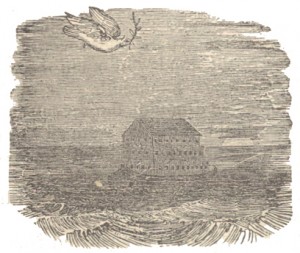 In the six hundredth year of Noah’s life, in the second month, the seventeenth day of the month, the same day were all the fountains of the great deep broken up, and the windows of heaven were opened. (Genesis 7:11)
In the six hundredth year of Noah’s life, in the second month, the seventeenth day of the month, the same day were all the fountains of the great deep broken up, and the windows of heaven were opened. (Genesis 7:11)
Keep in mind that there is some evidence that in Noah’s day the calendar year began in the fall which equates to our current September/October. That means the 17th day of the second month of Noah’s day would have been the late October early November time frame. Remember it was not until the events of the Exodus that YHWH commanded Israel to begin their calendar relative to the agricultural month of Abib which falls in the spring. As we will see in Part II of this article, YHWH’s command to fix the Israelites’ religious calendar to the month of Abib has some wonderful Messianic implications.
So then, we have historical records which indicate that Halloween, All Saints Day, and the Day of the Dead commemorate the Biblical history of the Deluge, once again proving the Bible is more than a collection of ancient fairy tales as some modern scholars would have you believe.
The Spanish philosopher George Santayana wisely observed that, “Those who cannot remember the past are condemned to repeat it.”
The Bible tells us that at the time of the Messiah’s return mankind will have forgotten or no longer care about the past. Even worse that generation will acting in a way similar to those of Noah’s generation who brought gods wrath upon this earth.
And as it was in the days of Noe [Noah], so shall it be also in the days of the Son of man. They did eat, they drank, they married wives, they were given in marriage, until the day that Noe entered into the ark, and the flood came, and destroyed them all. (Luke 17:26-27)
My hope, in sharing this bit of history with you, is that this year on Halloween you’ll remember the past so you aren’t condemned to repeat it. Remember that this Day of the Dead marked the judgment of a righteous God on a sinful world and the greatest loss of human life in the history of mankind. Also, remember the Bible tells us that when the Messiah returns it will be as it was in the days of Noah.
I ask you, in the days to come will you be like righteous Noah and his family who by faith heeded the warning and was protected from YHWH’s righteous judgment? Or will we be like those outside the ark who were blinded by their own sin and didn’t see the judgment coming until it was too late?
Maranatha!
And that, knowing the time, that now it is high time to awake out of sleep: for now is our salvation nearer than when we believed. The night is far spent, the day is at hand: let us therefore cast off the works of darkness, and let us put on the armour of light. Let us walk honestly, as in the day; not in rioting and drunkenness, not in chambering and wantonness, not in strife and envying. But put ye on the Lord Jesus Christ, and make not provision for the flesh, to fulfil the lusts thereof. (Romans 13:11-14 )
* * *
1The Great Pyramid: It’s Divine Message, (Pyramid Records) D. Davidson and C. Aldersmith 1924, pp. 23-26
2Detailed explanations are given in descriptions of Plates IX, X, and XI.
3For the data concerning this refer Section II, ^ 56.
4Breasted, “ Ancient Records,” I, pp. 260-271.
5Frazer, “Adonis, Osiris, Attis,” pp. 241-242.
6” Adonis, Osiris, Attis,” pp. 241-2.
7Ibid., pp. 241-2.
8Ibid.,-pp. 244-8.
9Ibid., pp. 254-5.
10A. Moret, “ Kings and Gods of Egypt,” pp. 69-108, 148-198.
11” Adonis, Osiris, Attis,” p.5 Both are standard works on this subject.
12Abydos II, pp. to, 30, 48.
13In Prof. C. P. Smyth’s “ Life and Work at the Great Pyramid,” Vol. II, p. 390.
14“Refer Section II, H 55.
15“Plutarch, De Iside et Osiride, Vol. FI, p. 336.
16Translation by Dr. Alen H. Gardiner, “ Journal of Egyptian Archaeology,1’ Vol. I, p. 34.
17Translation by Dr. Ed. Naville, “Records of the Past,” 1st series. Vol. VI, pp. 105-112
18Haliburton in Smyth’s “ Life and Work at the Great Pyramid,” Vol. II, pp. 384-386.
19lbid., p. 390.
20”Gods of the Egyptians,” Vol. I, pp. 428-429.
21ll Hallow’s Eve or Hallowe’en ?




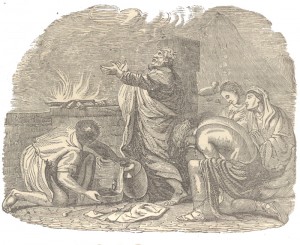
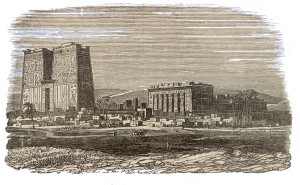
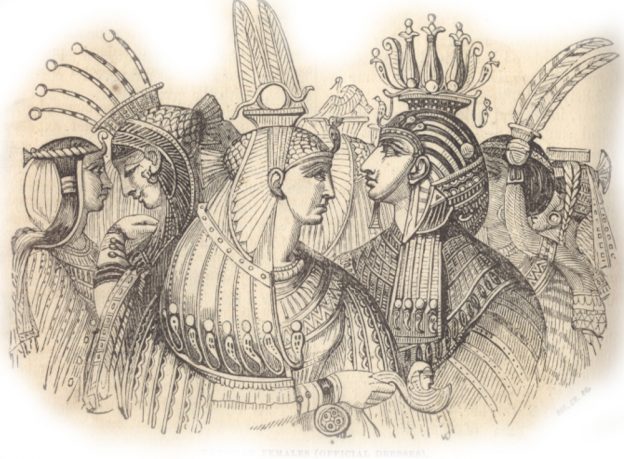
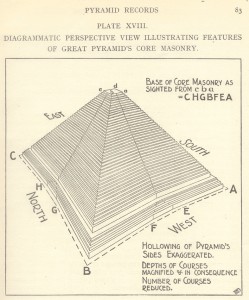 You see, nearly two thousand years ago the Great Pyramid in Egypt was already considered a monument built by the descendants of Seth to monumentalize a warning to mankind that judgement was coming. Some even claim this pillar has messianic significance. A discussion of whether this tradition is true or not will have to wait for another article, but we do know from the evidence of the Great Pyramid itself, that it was built in such a way that it marked the first day of November (and the Flood) in a very special way. I’ll get to that in a moment, but first let me describe this monument in a little more detail. For context’s sake keep in mind that Goshen, where the children of Israel lived for several hundred years, was only fifty miles or so from this great monument. In a moment you will see why the Great Pyramid was known to the ancient Egyptians as Ta Khut “The Light” and why it is still one of the greatest manmade wonders of the world.
You see, nearly two thousand years ago the Great Pyramid in Egypt was already considered a monument built by the descendants of Seth to monumentalize a warning to mankind that judgement was coming. Some even claim this pillar has messianic significance. A discussion of whether this tradition is true or not will have to wait for another article, but we do know from the evidence of the Great Pyramid itself, that it was built in such a way that it marked the first day of November (and the Flood) in a very special way. I’ll get to that in a moment, but first let me describe this monument in a little more detail. For context’s sake keep in mind that Goshen, where the children of Israel lived for several hundred years, was only fifty miles or so from this great monument. In a moment you will see why the Great Pyramid was known to the ancient Egyptians as Ta Khut “The Light” and why it is still one of the greatest manmade wonders of the world.